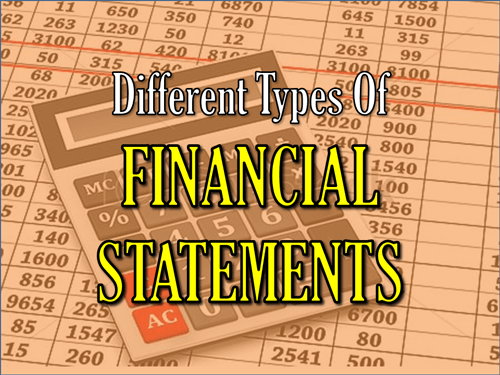CONTACT
Quick Contact
Error: Contact form not found.
Recent Posts
Categories
What Are The Different Types of Financial Statements?
Financial statements are of out-most importance for the success of any business. It is the formal record of all financial activities of a business organization. These reports help business owners to identify the performance and financial strengths of their company.
Different Types Of Financial Report
Given the fact that financial reports reflect the financial status of a company and help in charting out future plans for a budding enterprise, there significance for small business owners is paramount. Most business owners generally overlook the benefits of financial statements, but these reports can make a difference between failure and success of any business.
For a small business, financial statements can be classified into 4 basic types; however the reporting gets more intricate as the business grows.
4 main financial statements
1.Statement of Financial Position
Another name for this financial statement is Balance Sheet. It represents the financial position of a business at any point of time. It helps business owners to scrutinize the position of the company, and identify the trends in the financial position of the business.
Qualitative analysis of this financial report is a measure against financial risk, credit risk and several other business risks. If analyzed in correspondence to the reports of competitors, this financial statement not only helps you predict future plans but also allows you to chart plans for fund allocation and investment in the business.
2. Income Statement
Income Statement or the Profit and Loss Statement represents the performance of a business in terms of net profit and loss over a specific period of time. Income Statement is the balance between net income and net expenses.
It is an important tool to analyze the performance of a business over an accounting period in terms of changes of sales revenue and profit margins. It also helps in analyzing the competition in market and scrutinizing the lapses in an entity with relation to the Income Statement of competitors.
3. Cash Flow Statement
Cash Flow Statement represents the flow of cash in an entity over a period of time. This movement of cash is identified in three segments, namely, Operating Activities, Investing Activities and Financial Activities.
Cash Flow Statements provide insight into the liquidity and solvency of a business. They are a very important tool for business owners in taking economic decisions for long term investments as they help in the prediction of future cash flow based on previous records. They help business owners scrutinize financial position over a specific period of time and identify lapses to take intuitive decisions.
4.Statement of Changes in Equity
Also known as Statement of Retained Earnings, Statement of Changes in Equity reflects the changes in equity of owners in a business over a specific period of time. This financial statement is highly complex and composed of several small components; however its importance and benefits are pivotal for any business owner.
This financial statement provides important information about equity reserves of a business, which cannot be identified anywhere else in financial reports. As it allows business owners to identify the factors that results in changes in owner’s equity, it also empowers them to take visionary decisions to strengthen it.






